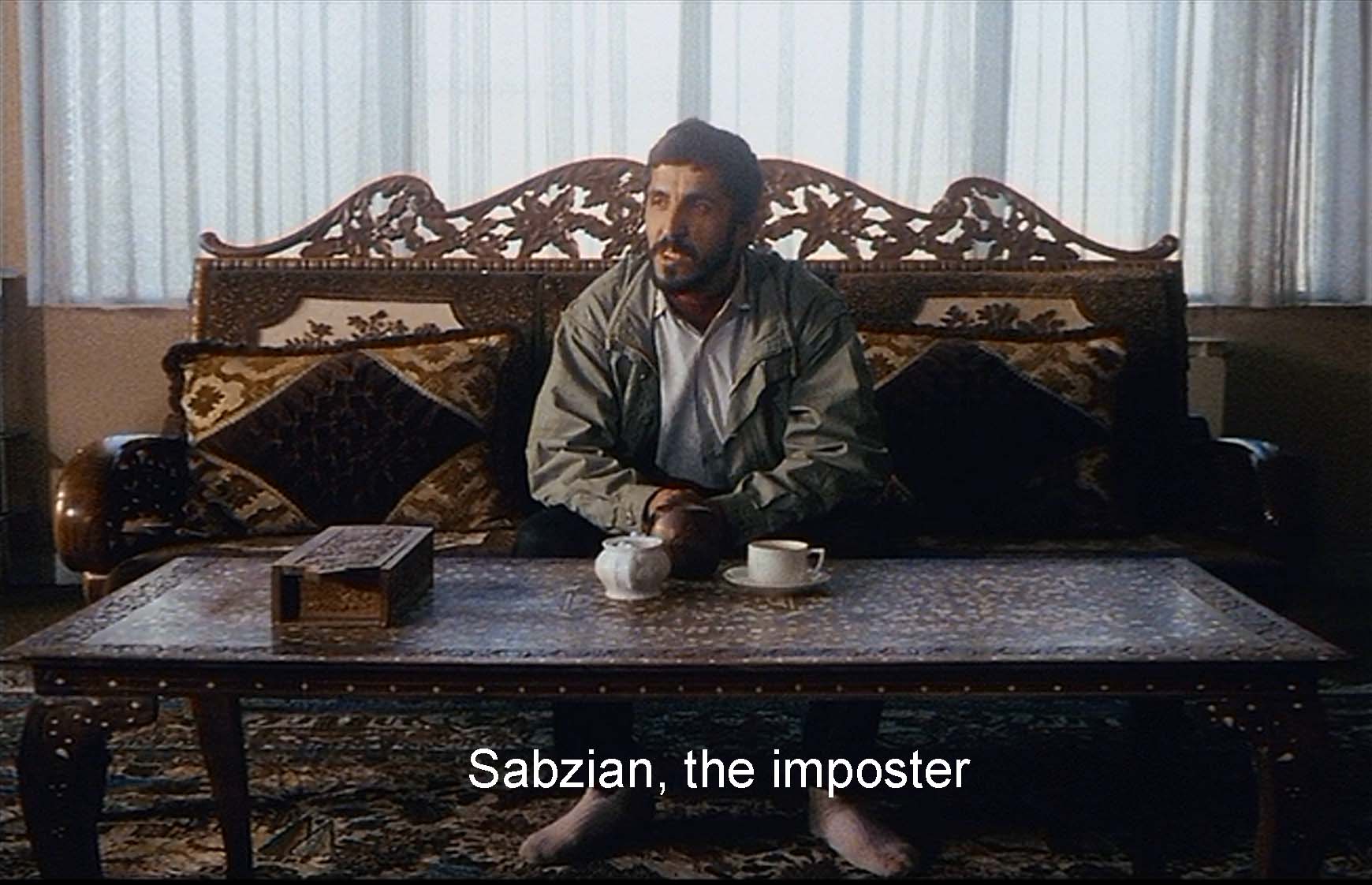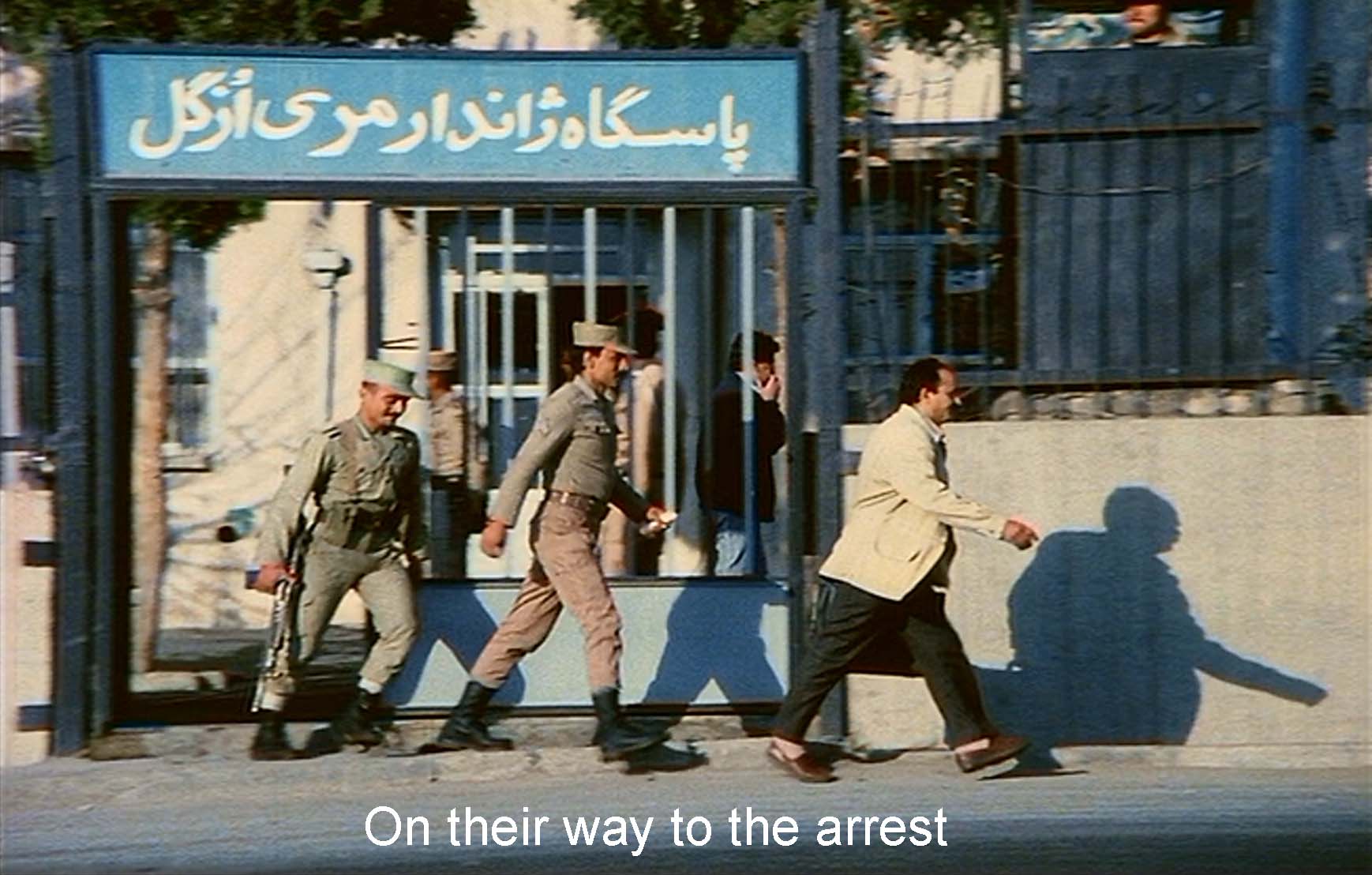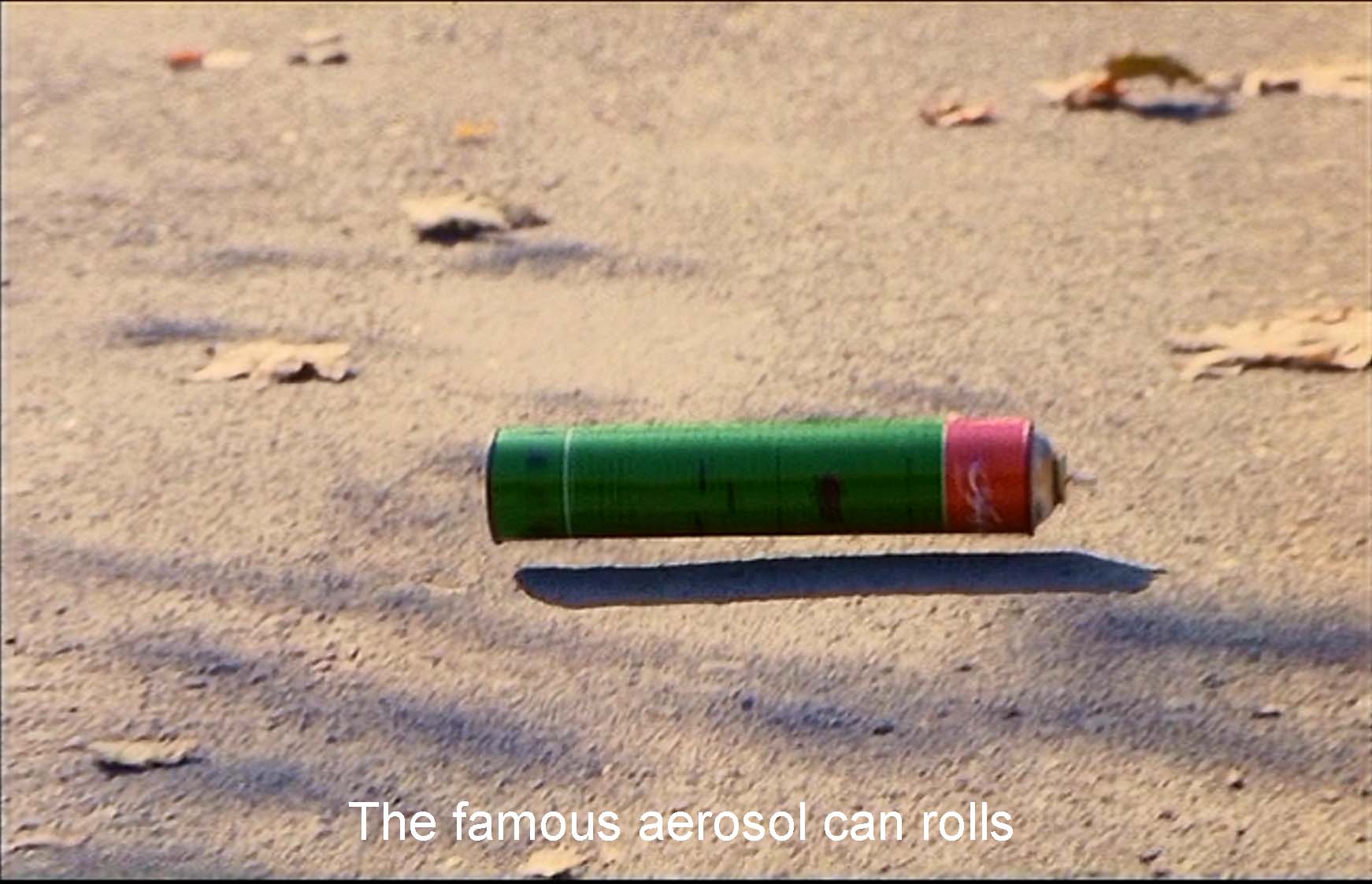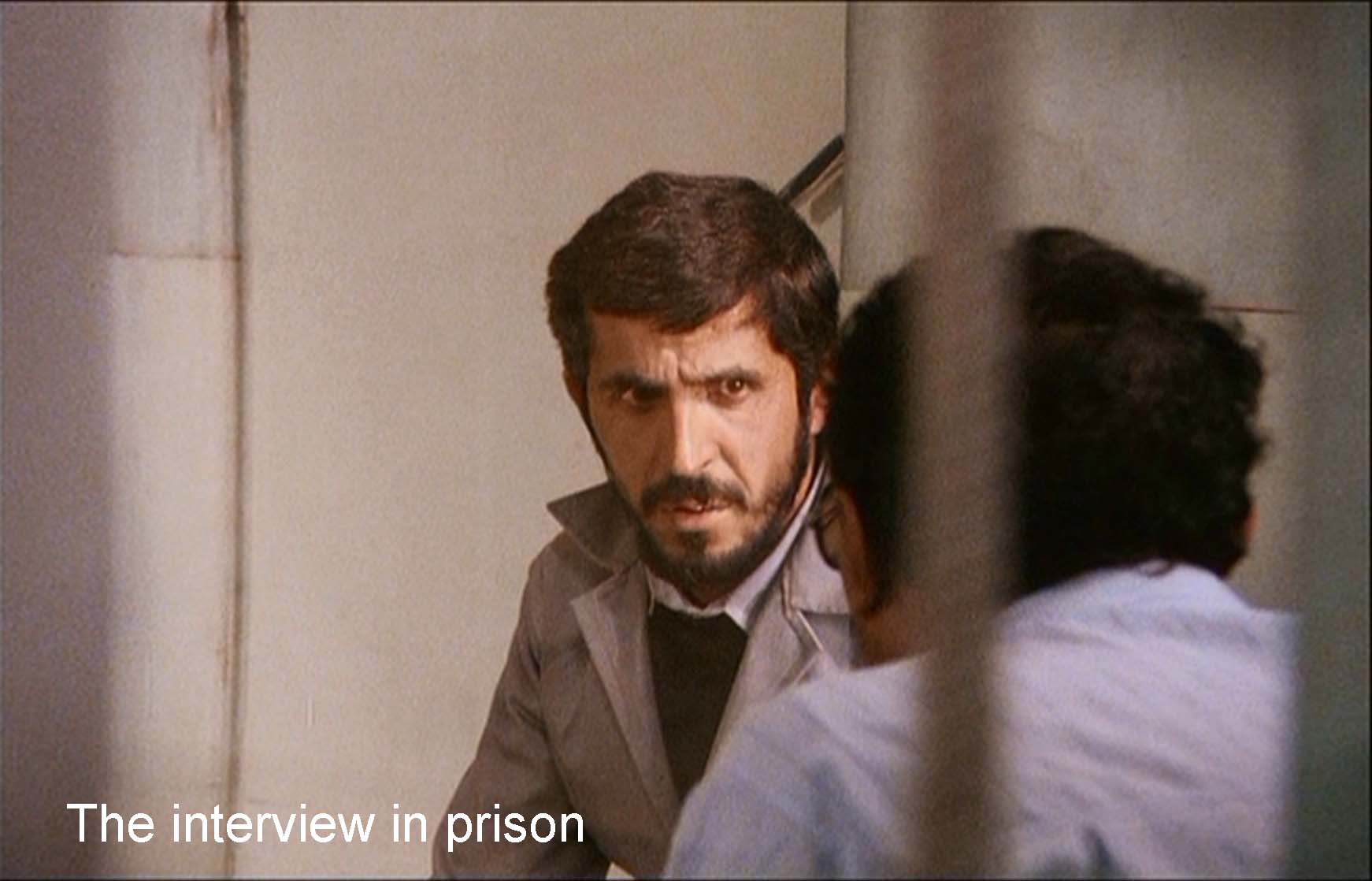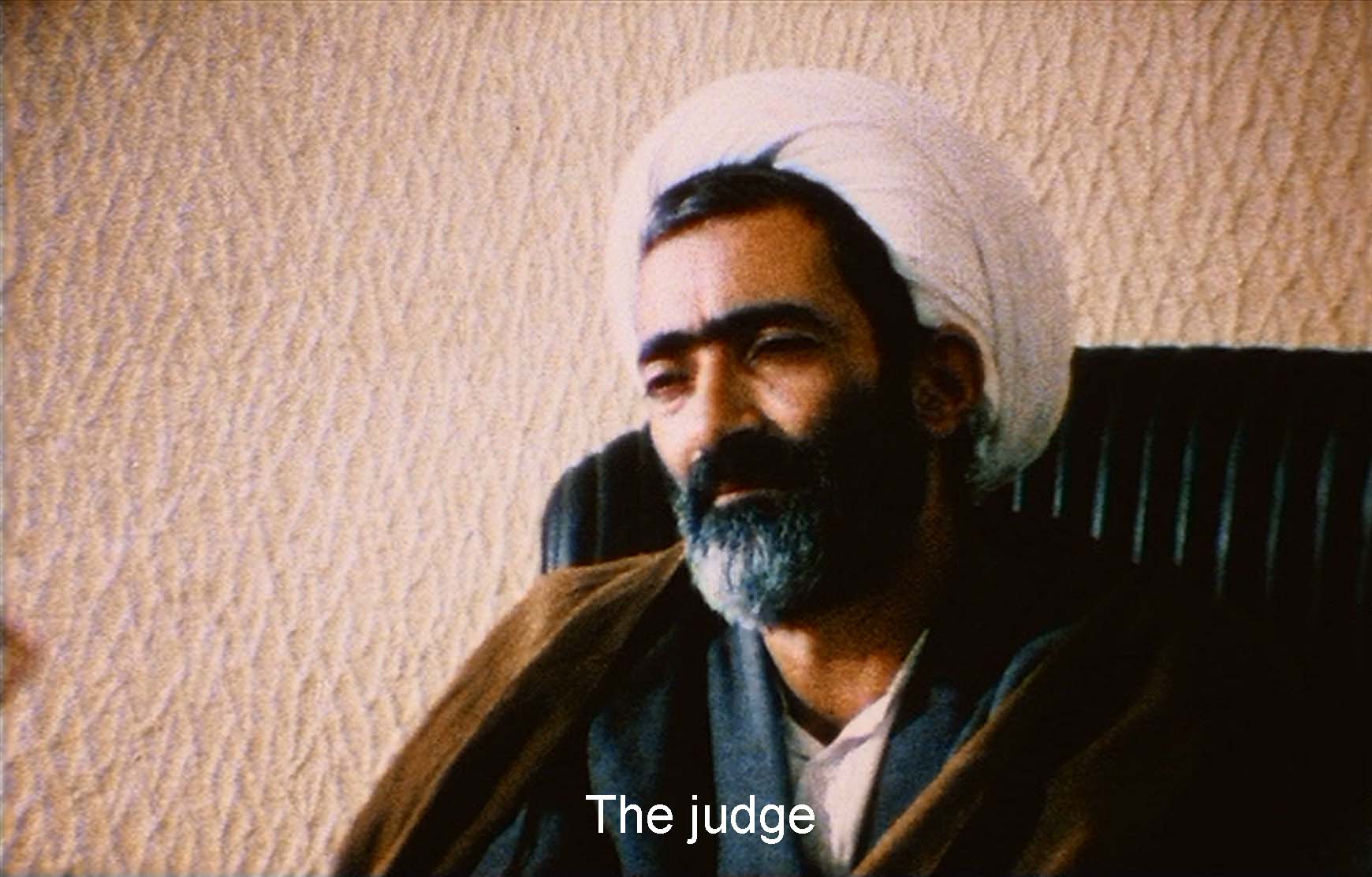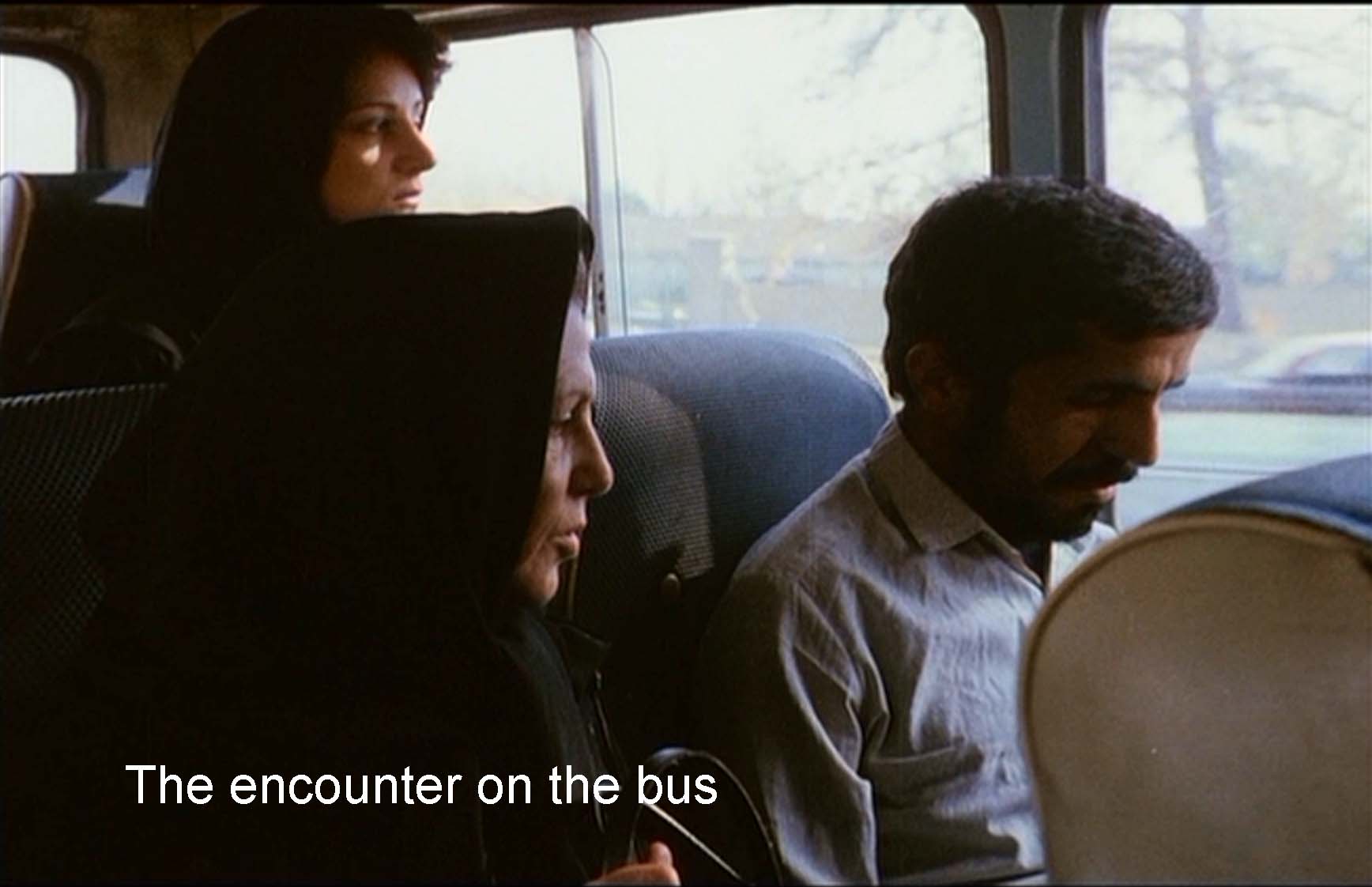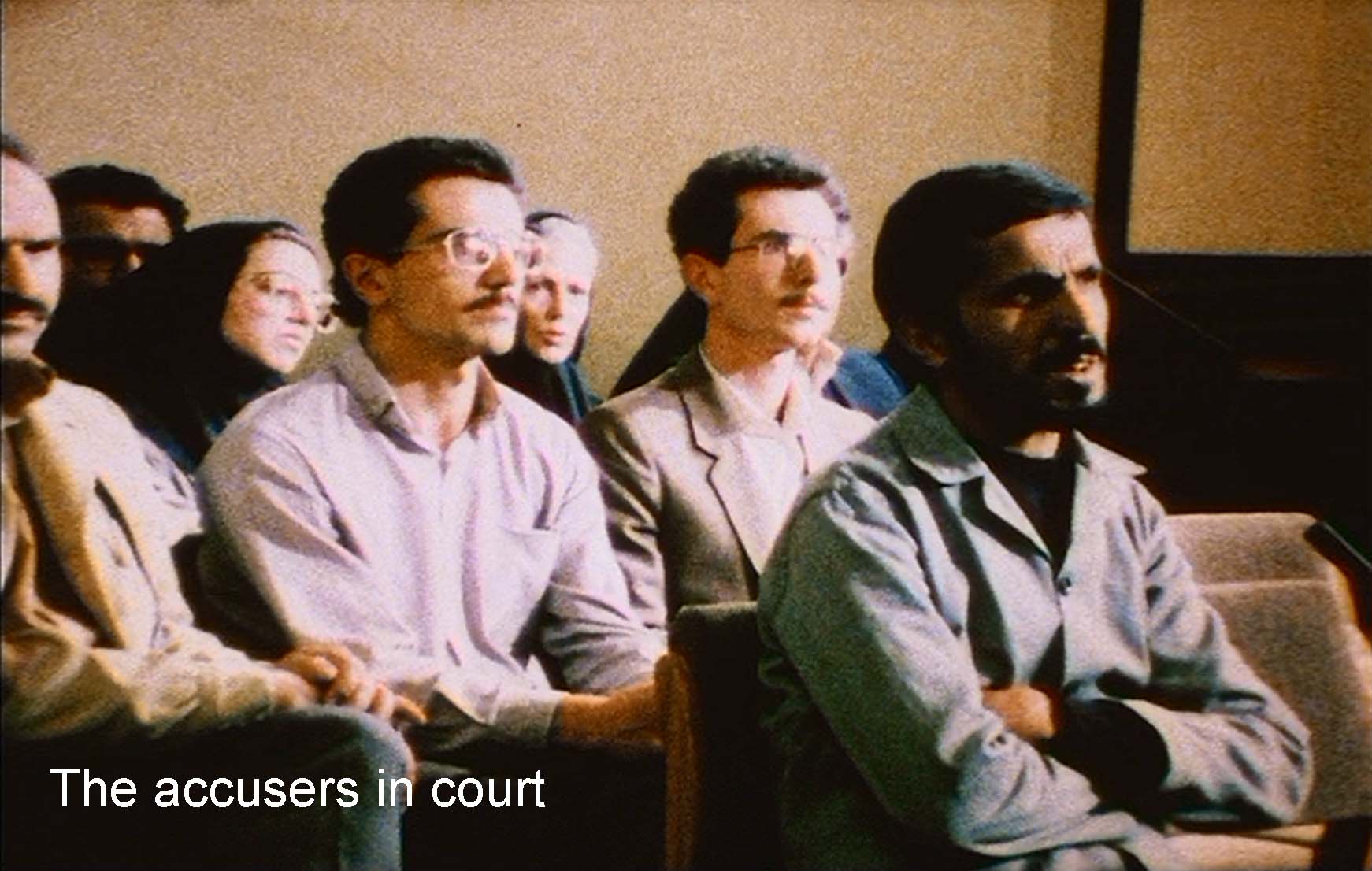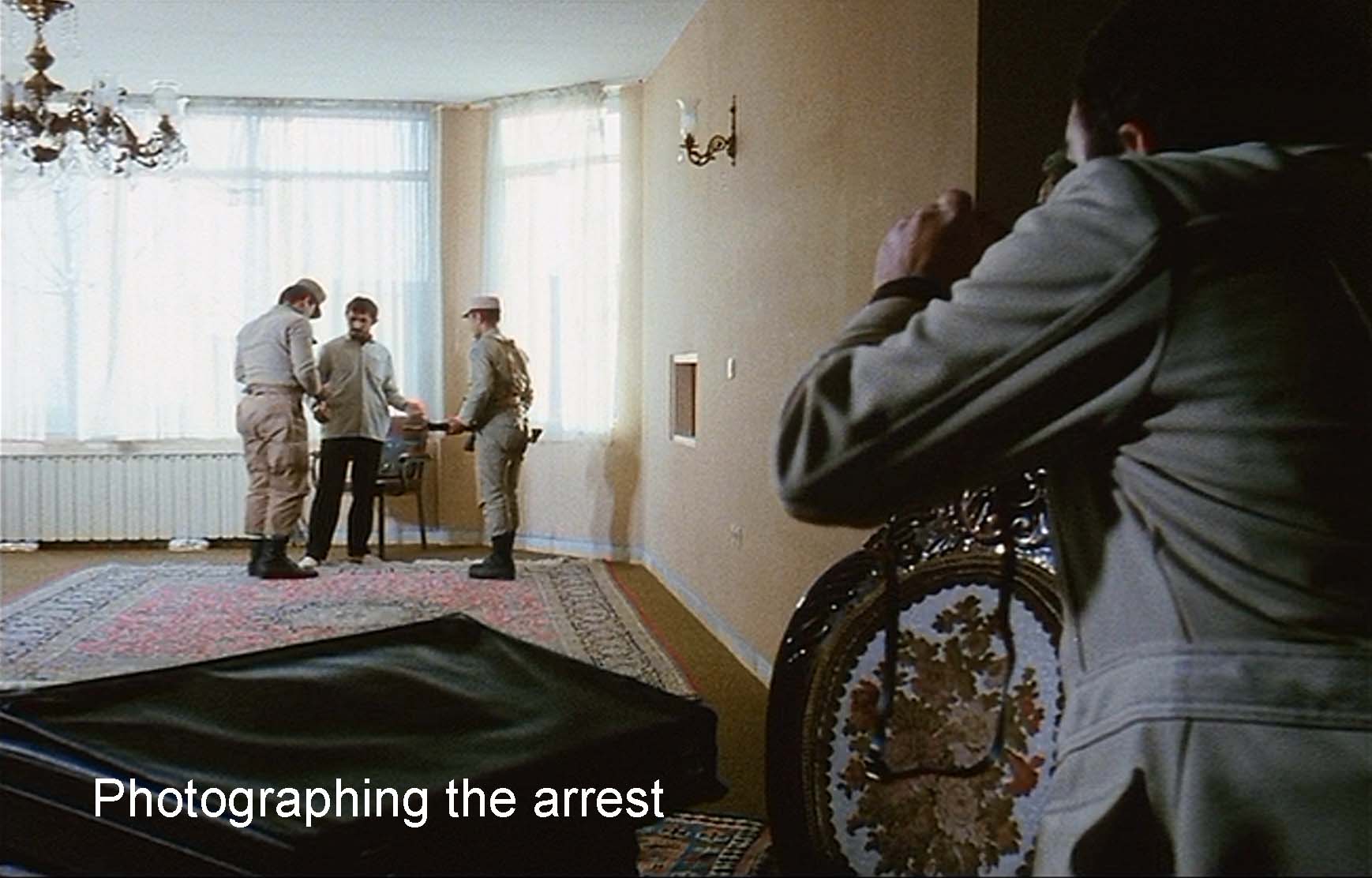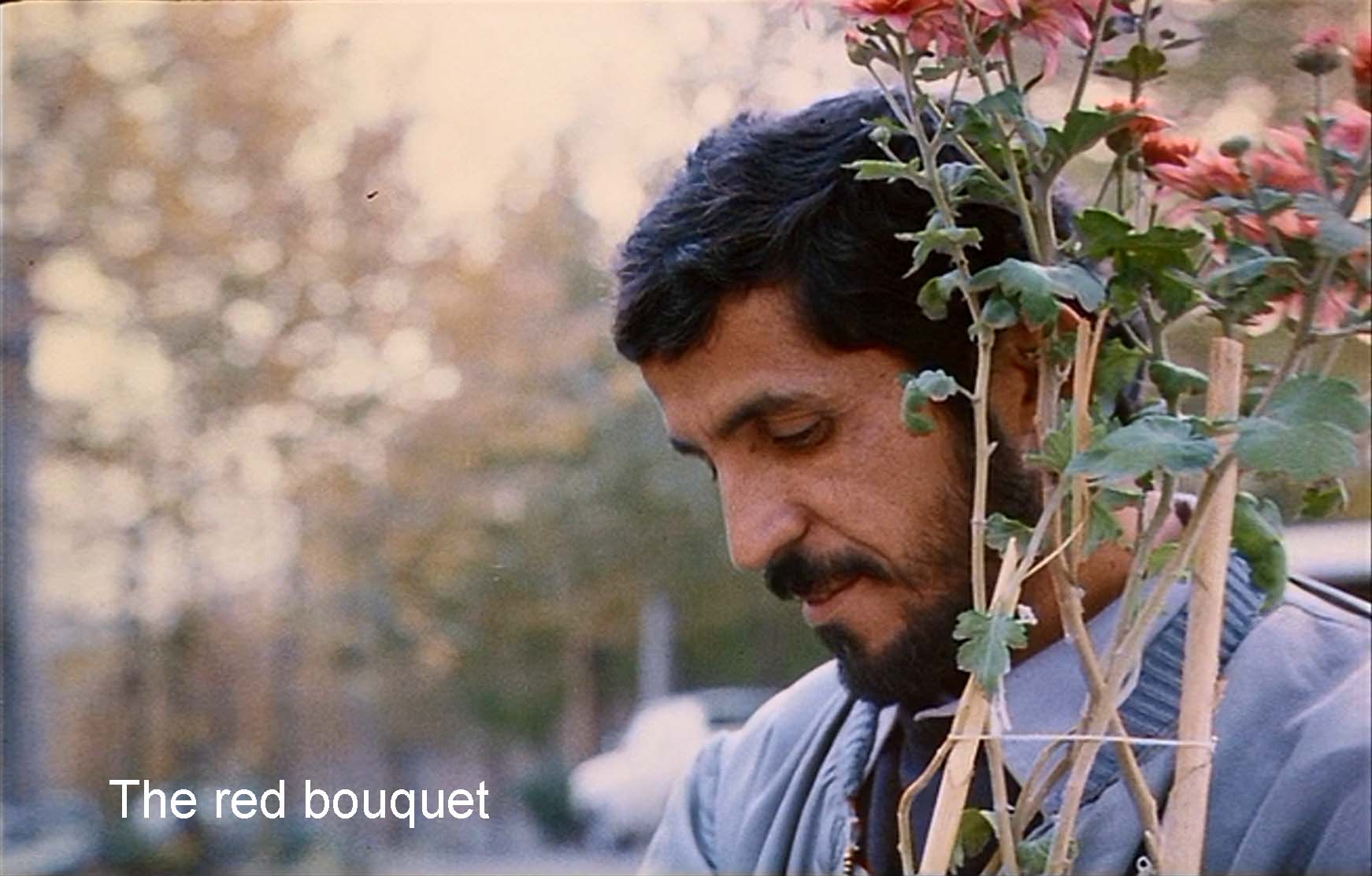In outline, this film has nothing complicated about it. A poor man, Hossein Sabzian persuades the well-to-do Ahankhah family that he is the noted filmmaker Mohsen Makhmalbaf. (In Iran, film directors get the kind of adulation that France reserves for intellectuals and America for sports and movie stars.) When the Ahankhahs discover the deception and a journalist publicizes it, Sabzian is arrested and carted off to prison. There is a trial, followed by forgiveness all around. The point of this film is not the story, but the manner of its telling.
Kiarostami’s film draws on two traditions: one, the long tradition in Persia/Iran of great respect for the arts, notably poetry and miniature painting; two, the much more recent turn toward postmodernism. The Persian/Iranian tradition yields strong, simple images like those in the Rubaiyat of Omar Khayyam: a jug of wine or a loaf of bread. Often film titles and dialog come from Farsi poetry.
As for postmodernism, I probably oversimplify when I call this movement a radical shift in medium from modernism. Modernism concerned itself with the artistic object: a painting by Picasso, a statue by Lipschitz, a chorale by Schönberg. The postmodern artist works not with oils or clay or tones but with what is going on in the audience’s mind. The artist plays with what you think or know or feel. The boundaries of the work of art become less clear: facts about the author, the author’s technique, parody, quotation and appropriation, irony, social context, all become part of your knowledge and hence the work of art. Gone is the clear boundary between me here and painting there. Rather my reaction is the painting. As Kiarostami has said, “There are as many different versions of the same film as there are members of a given audience.”
At a philosophical level, postmodernism says that there is no truth without its representation. Hence a postmodern documentarist in film (like Kiarostami) will include the camera and microphone. Kiarostami will make sure that your knowledge and response—they are the film’s real medium—include the director, the camera, the sound crew, and so on.
Often, people walk between the camera and the subject or cars interfere with what the camera sees. Late in this film, in a crucial scene, you will hear the sound crew complaining that their equipment is old, that there is a loose wire, and you won’t be able to hear what’s going on. In that late scene, we watch Sabzian and Makhmalbaf through a cracked windshield on the equipment van or through its side mirror. Kiarostami keeps the camera at a distance. Earlier in the movie, Sabzian watches the soldiers arrive through a curtain. In the beginning, when we are anxious to see what is going on inside the Ahankhahs’ house, Kiarostami keeps his camera instead on the taxi driver waiting outside. This is what critic David Denby nicely calls Kiarostami’s “mischief.” Kiarostami keeps us constantly aware that we are watching his movie, not reality, not truth. We are watching through somebody else. Doors and windows become a symbol for this in-betweenness. The first thing we see in this film is a gate, and the last is a door. Seeing truth is difficult, ultimately not even possible. The search for truth in the courtroom is blurrier than the rest of the film (because it was shot in 16mm).
We see everything through somebody’s point of view. To the postmodern artist, subject and object, self and other, are not separate. We live in a global world. Here I, sitting in Gainesville, Florida, involve myself in the fate of Sabzian, a poor Iranian man who would like to make a film. These fluid boundaries lead to the ethical concerns of this movie: Kiarostami involves himself in the life of Sabzian, he shows a patient sympathy for the man, and he enables him to gain fame and filmmaking. He brings about forgiveness and the union of Sabzian and Makhmalbaf and the Ahankhahs.
Kiarostami presents his material as if it were a documentary. But, of course, it can’t be. Kiarostami could not have been present at the private conversations between the Ahankhahs and Sabzian or between the intruding journalist and the officers he brings to arrest Sabzian. He staged and directed these events as if he were making a fictional film. Kiarostami tells us as much, when he lets us see his camera when he interviews Sabzian in prison or when the sound equipment fails in the final sequence. And Kiarostami controls the trial: we hear him get the date set earlier; he positions his camera and crew in the courtroom and he explains to Sabzian how they are positioned; he conducts part of the questioning himself off-camera; we see the sound boom and his lights. Traditionally, documentary filmmakers are supposed to record events, not stage them. Yet here Kiarostami stages the all-important denouement, the moving reconciliation between the Ahankhahs and Sabzian that includes Makhmalbaf, the famous director Sabzian pretended to be.
So are these events really happening? Well, yes. They were all over the newspapers in Iran (and Kiarostami shows us the press issuing the story). But Kiarostami is also faking them. He is like the impostor Sabzian. Sabzian really does want to make a film. And, in fact, he does as he promised. Sabzian brings a film crew (Kiarostami’s) to the Ahankhah house to make a movie about them and starring them.
This work of art presents a truth, but presents it in such a way that it looks like a fake. This film is both true and untrue. “We can never get close to the truth except through lying,” Kiarostami has said. Questions of truth aside, though, Close-Up also presents a lot of ethical issues: lying, pretense, intrusion, respect, trust, justice, restitution, reconciliation, and so on. Postmodern it is, but not an abstract formal exercise.
Close-Up has social themes as well as postmodern hijinks. We get them from the very first shots. The journalist and the taxi driver, lower class citizens, do not know their way around the upper-class neighborhood where the Ahankhahs live.
The movie contrasts those who have money and power with those who don’t. Topmost in the social scale come the filmmakers Kiarostami and Makhmalbaf, men with international reputations and high status in Iran. Then come the Ahankhahs with their ostentatious house (with its security gate). Next down are the minor characters: the journalist, the two soldier-policemen—they at least have jobs. At the bottom of the heap is Sabzian, who worked in a printing plant but is now unemployed and was divorced by his wife.
What happens to him after the ending? Who knows? This film is open-ended in the best neo-realist tradition. A real documentary Close-Up: Long Shot interviewed Sabzian six years after Kiarostami’s film appeared. Interviews reveal a sensitive, occasionally wise individual but an incorrigible liar and impostor, crazy about movies. He was trying to make a film when he went into a coma after an asthma attack and died at the age of fifty-two.
Sabzian acts. He acts with the Ahankhahs, and he plays a part in the courtroom. But everyone in this film pretends. The father, Mr. Ahankhah, pretends that he knew about the pretense all along. The mother pretends that her older son’s job is better than it is. The younger son, Mehrdad Ahankhah, pretends that he was afraid of a burglary. The judge is as much playing the part of a judge in this staged trial as actually judging. Sabzian/Makhmalbaf wants the family to see his film The Bicyclist in a theater because, he says, the theater’s version is less censored. (Here Kiarostami is playing on a well-known tactic of Makhmalbaf’s to evade the censors. He would show them a version with the objectionable parts cut out, but he would send to the theaters versions with those parts back in—another instance of pretense.) And, of course, Kiarostami is the biggest pretender of all. He pretends he is making a factual documentary, when he is in fact staging and directing all this and even creating the final outcome. We can understand social class in this context of pretense as a part you play in public, a role that society has cast you in.
A victim of social inequity, Sabzian pretends to be what he is not because he does not like what he is. In his courtroom speeches, he describes himself as a poor man without enough money to buy his son a treat. (In the top picture on the right, Kiarostami has shown him with a hole in his sock.) By contrast, he cut quite a figure as Makhmalbaf. People respected him. They did what he told them to do. He found that being—or pretending to be—this ideal self was like a drug, immensely satisfying, but dangerous. He felt guilty about his pretense.
Sabzian is not alone. Other characters in this little drama are not as they wish themselves to be. The journalist wants to be famous like celebrity journalist Oriana Fallaci. The soldier-policemen are displaced from their homes and reluctantly soldiering. They’re in, so to speak, the wrong place. The Ahankhah sons are unemployed or under-employed. They have the wrong jobs. The younger son wants to be an actor. The father was in the Shah’s army and has been unemployed since the revolution in 1979. The taxi driver was a pilot in the Iraq-Iran war, but now has to drive a cab.
Interestingly, the people who seem to function effectively are all employed: the filmmakers, Kiarostami and Makhmalbaf—and the judge. Having a job, the right job, makes up part of Kiarostami’s social theme. Not having the right job creates a discrepancy between what they are and what they would like to be. The greater the difference, the stranger the person and the more the desire to do something about it.
Sabzian and the others represent a universal problem. A difference between ideal self and real self creates desire, in Sabzian’s case, an overwhelming desire to bring his real self in line with his ideal self, a film director or actor. The journalist desires fame and fortune. The Ahankhahs want revenge for having been fooled. Sabzian and Kiarostami and Makhmalbaf all want to make their films.
At the same time that we see some people forcefully driven, pursuing their desires, Kiarostami gives us non-eventful moments. He focuses on minor characters—the taxi driver, the clerk of court—when we want to see the principals. Kiarostami’s camera lingers on purposeless non-events. We watch the taxi driver kicking an empty aerosol can (for thirty seconds!) outside the Ahankhahs’ house when our desire is to see what is going on inside. Above all, instead of simply telling us the story, he shows us the making of the movie. He lets us see the camera or microphone from time to time. He records his preliminary interviews with Sabzian and the judge. He makes his sound equipment fail in the last sequence, when he doesn’t want us to hear what Makhmalbaf is saying.
The desires that drive his audience and all people form one of Kiarostami’s major themes. The boy in The Traveler wants to see the soccer game. The “engineer” of The Wind Will Carry Us wants to make a film. The central figure of A Taste of Cherry wants to commit suicide. The protagonist of Ten wants to find out women’s situation in Iran.
